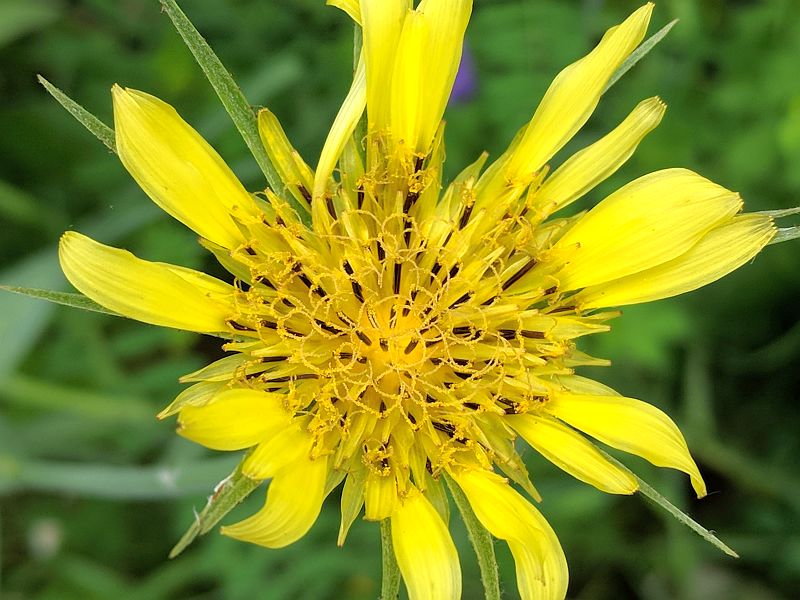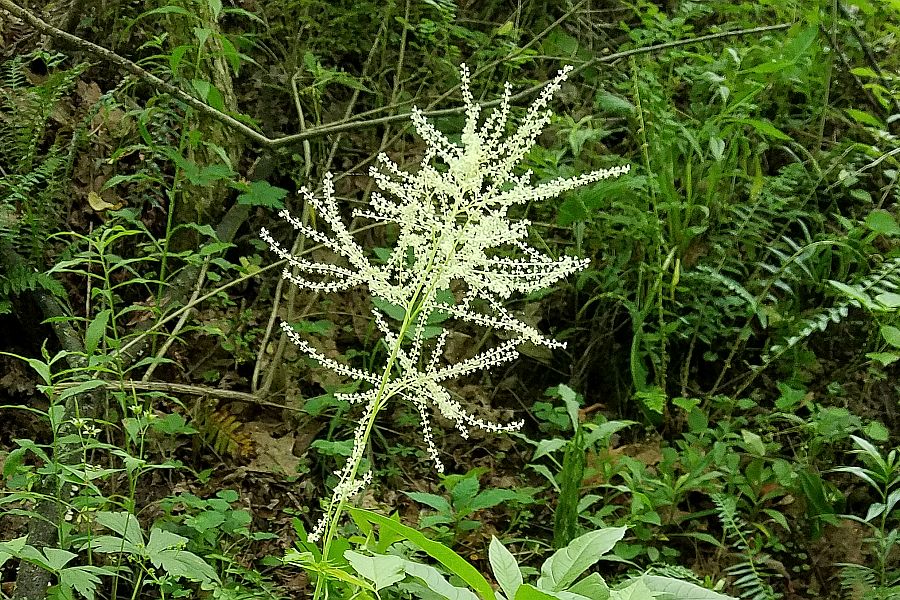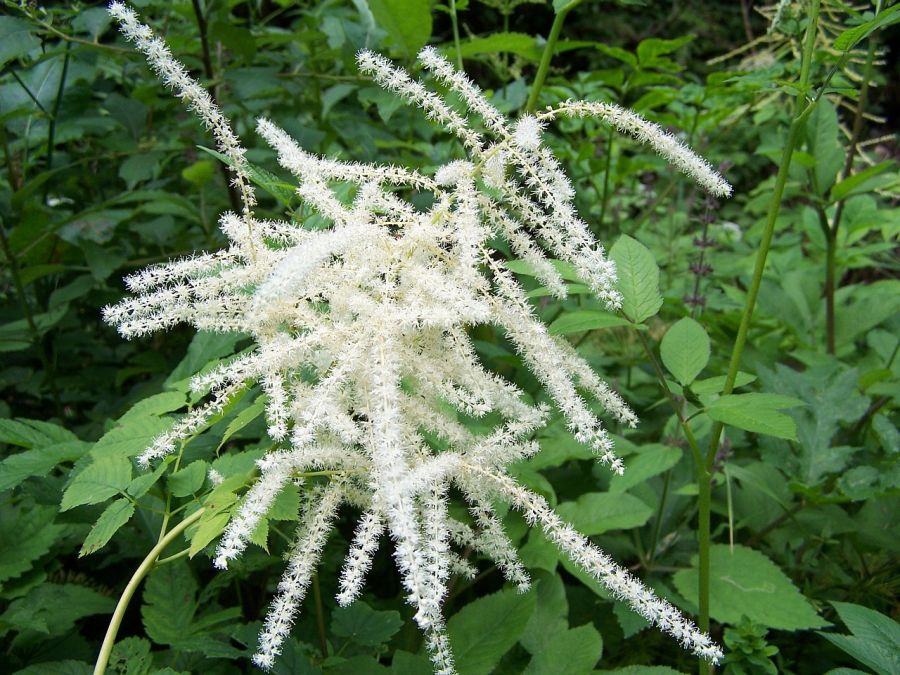
Here are two flowers that couldn’t be more different but they have the same common name: Goat’s Beard.
The Goat’s Beard flower above is Tragopogon dubius, introduced from Eurasia and named for its huge fluffy seed head. It loves full sun and thrives in poor, disturbed soil so I often see it in former waste places planted with wildflower seed mix. The flower above was at Lower Nine Mile Run on June 1.
The Goat’s Beard below, Aruncus dioicus, is a native of North America named for its fluffy male flowers. Four to six feet tall, it requires moist rich soil so I usually find it in the forest where a splash of sun breaks through. Dianne Machesney found this one last week.

The flower in her photo doesn’t look very fluffy. Here’s a possible explanation.
Aruncus dioicus is dioecius — some plants are male, others female. The male flowers are the showy ones. This showy flower from Wikimedia Commons may be male.

Be careful if you tell a butterfly enthusiast that you’ve found Goat’s Beard. The yellow-flowered Eurasian species is nothing to get excited about but Aruncus dioicus is the host plant for the rare Dusky Azure butterfly (Celastrina nigra).
Two “Goat’s Beards.” Perhaps even more.
(photo credits:
yellow Goat’s Beard flower by Kate St. John
white Goat’s Beard flower by Dianne Machesney
fluffy white Goat’s Beard flower from Wikimedia Commons; click on the image to see the original)
My bats never came back 🙁
For years I’ve had a couple of Little Brown Bats swooping over my yard in the evenings. It’s fun watching them from my patio. This year, no bats. Early in the spring I wasn’t worried. I thought they were staying in hibernation until the insects started flying. I miss my bats.